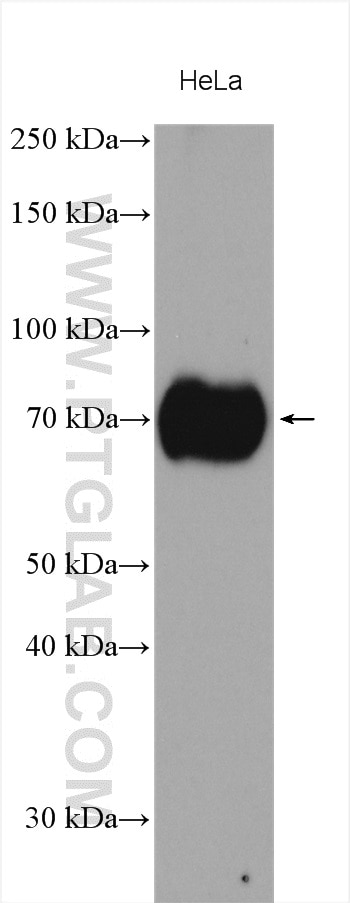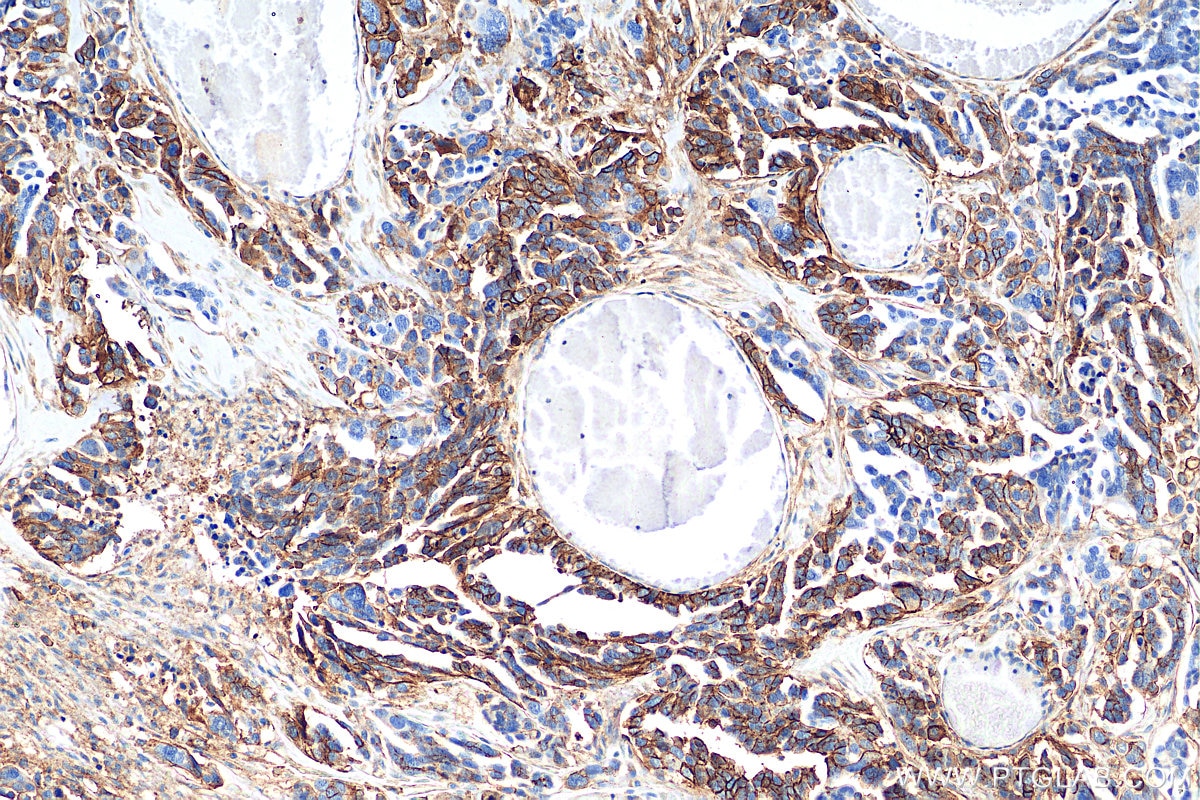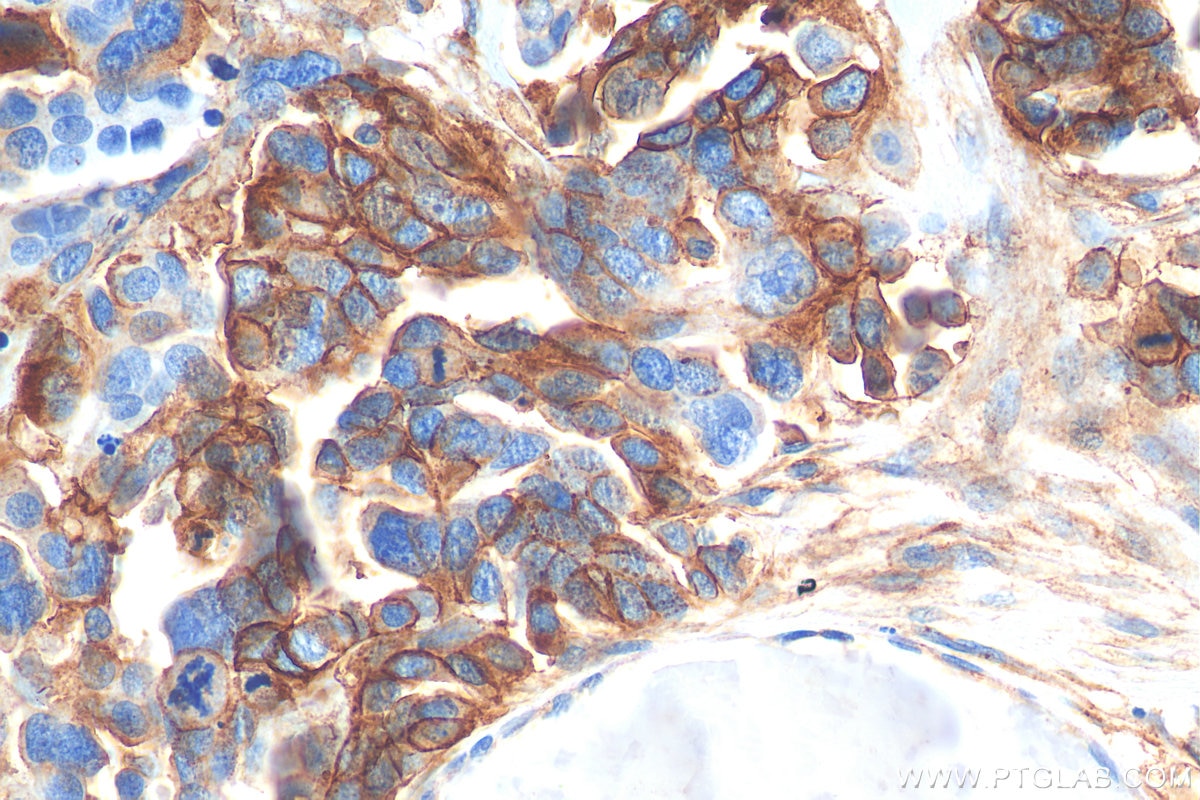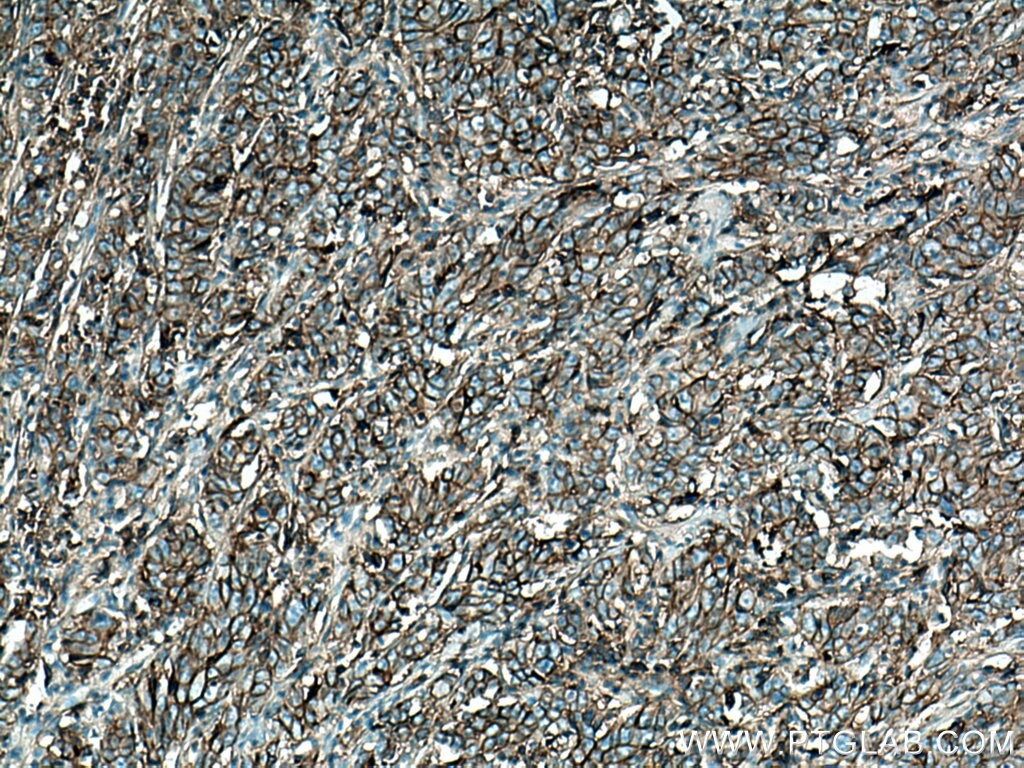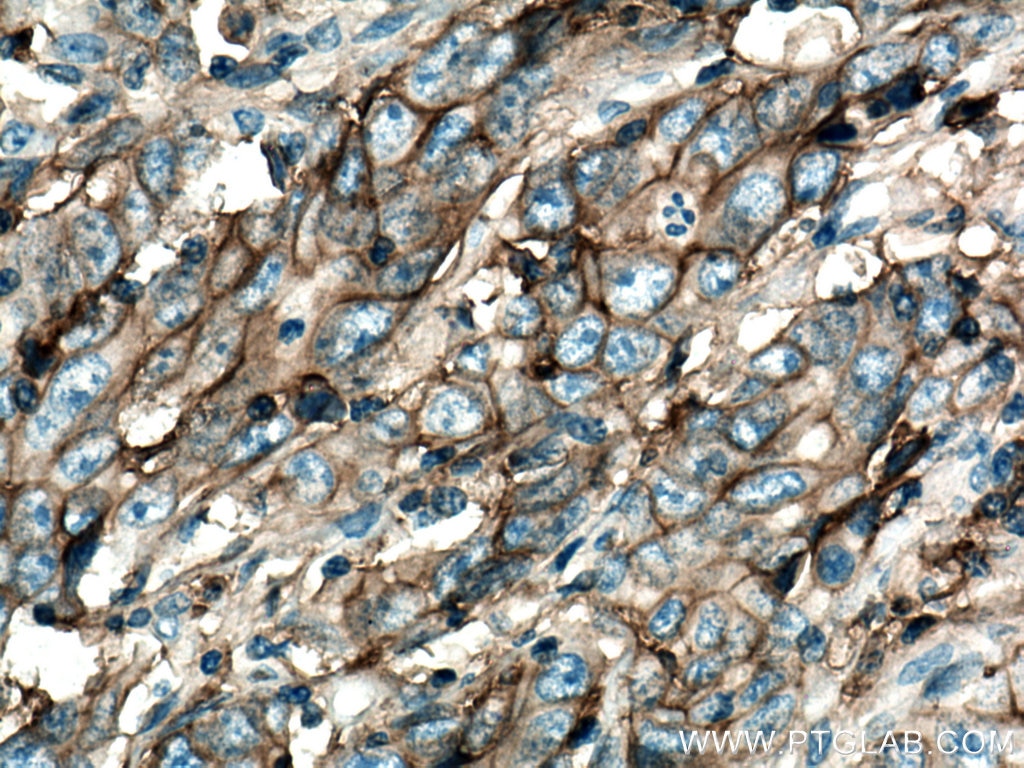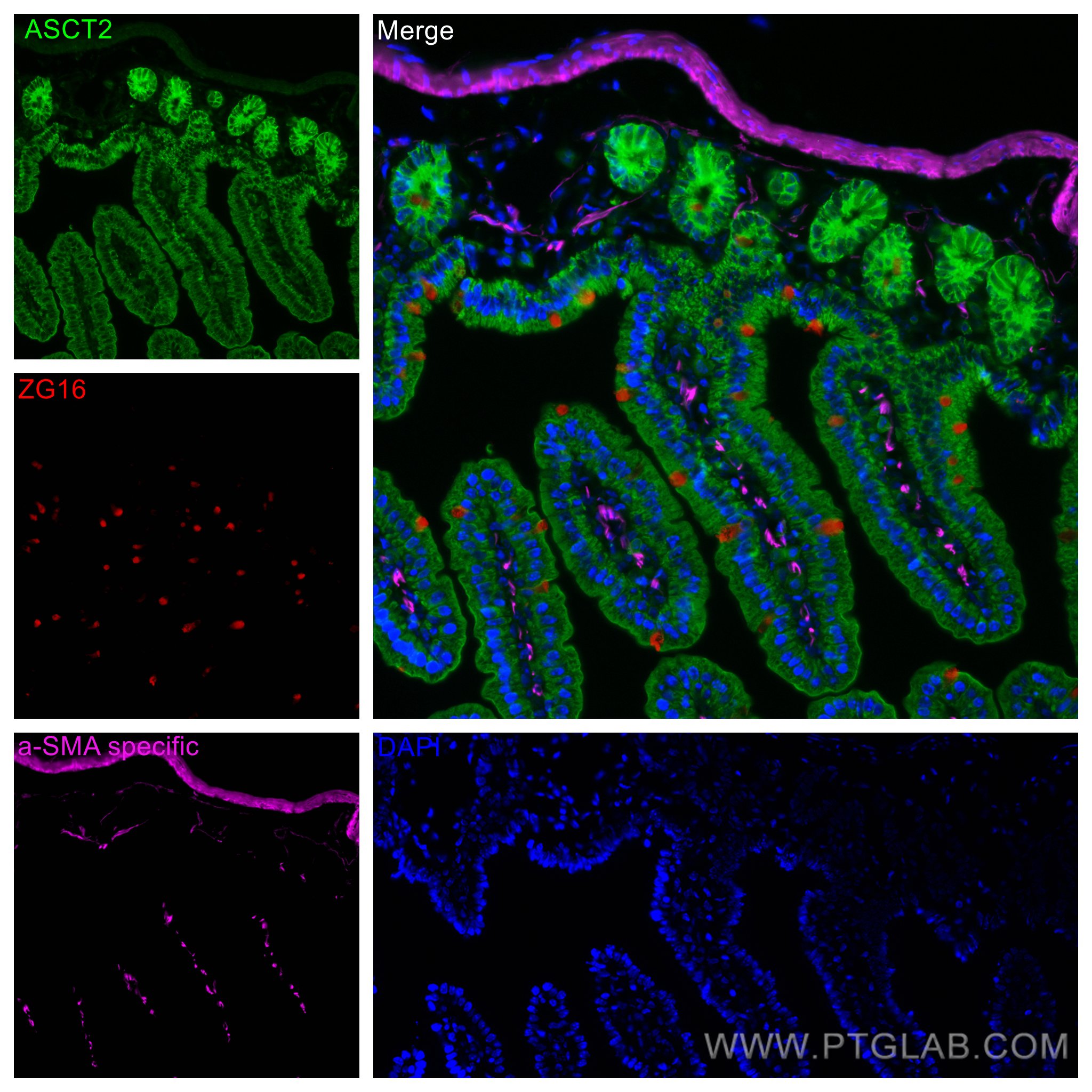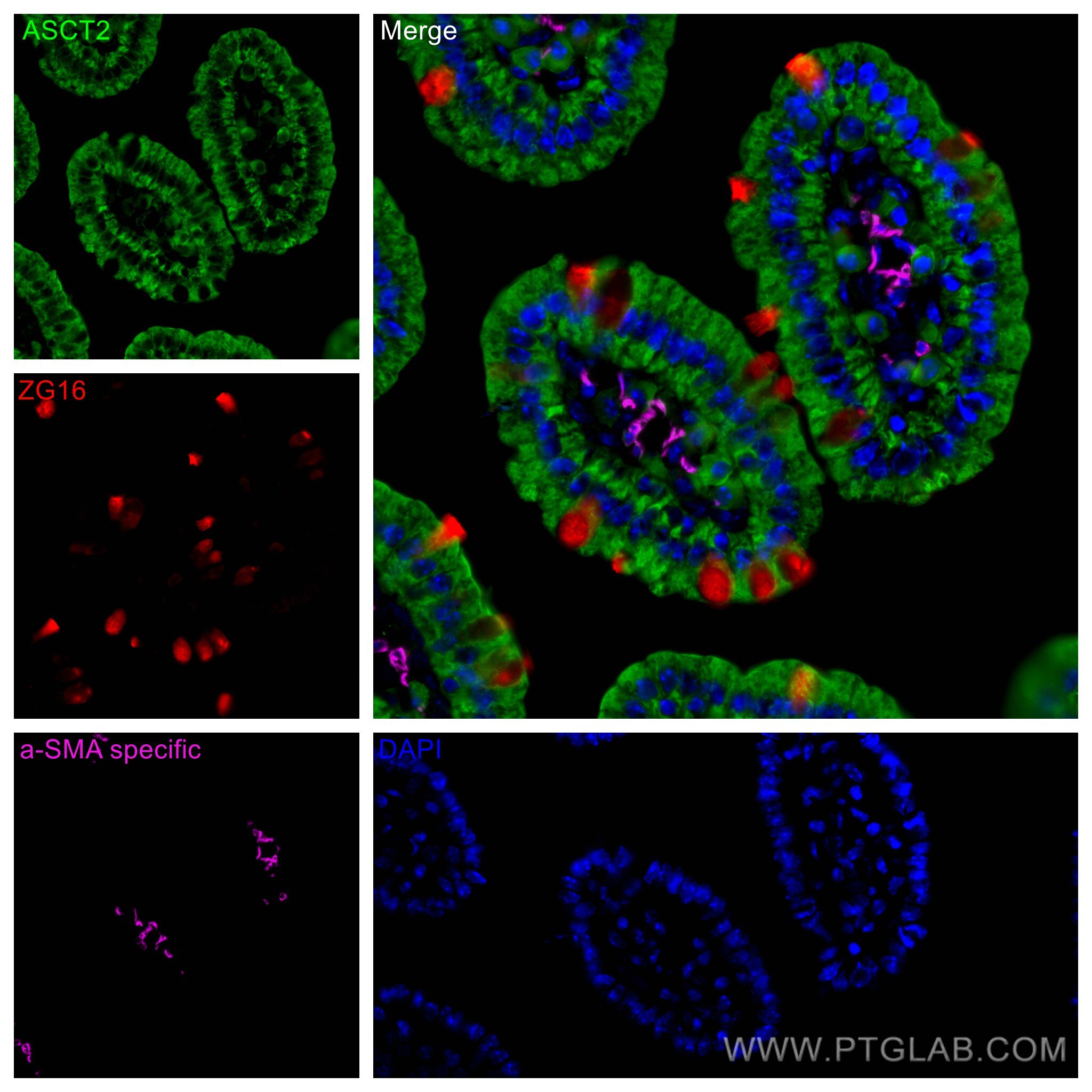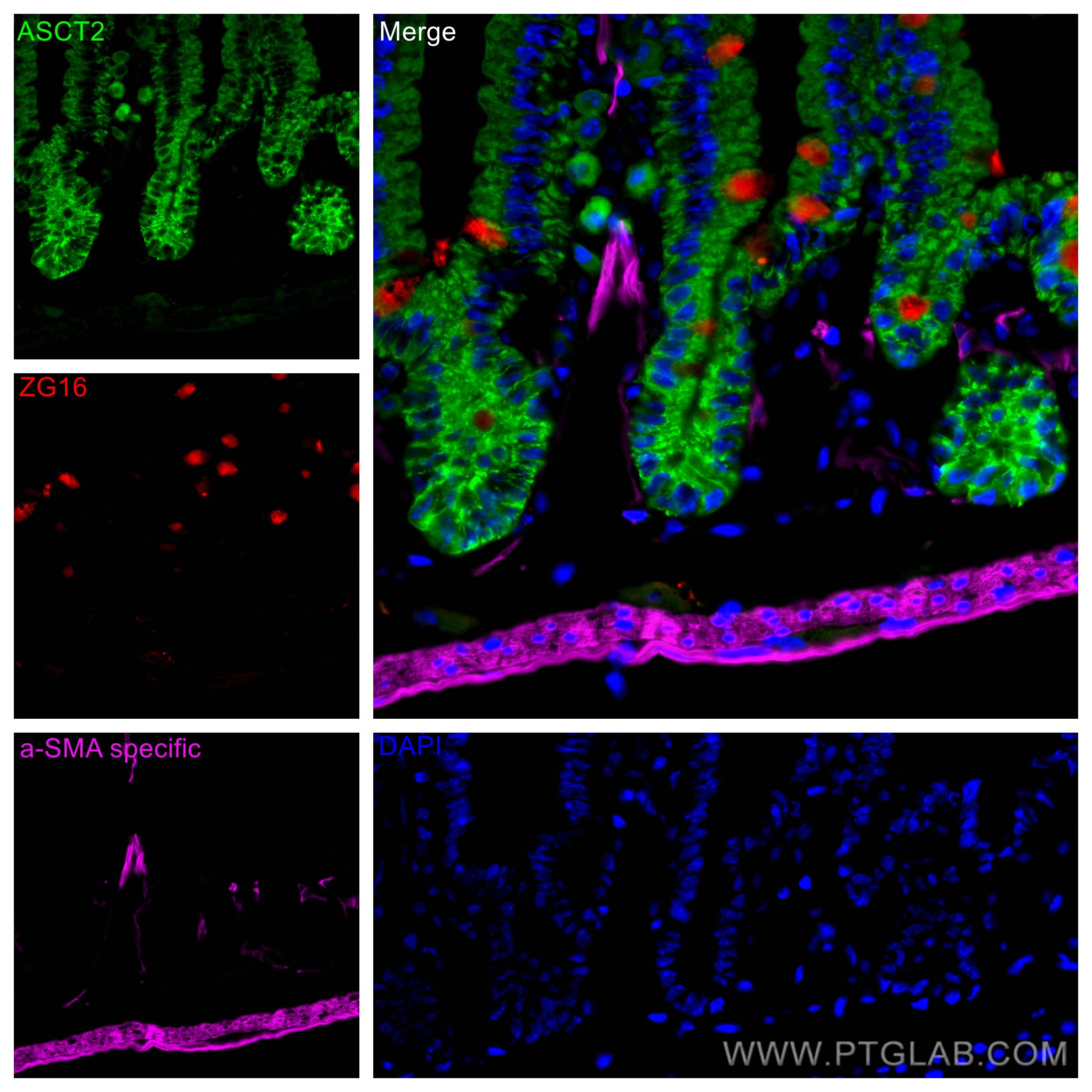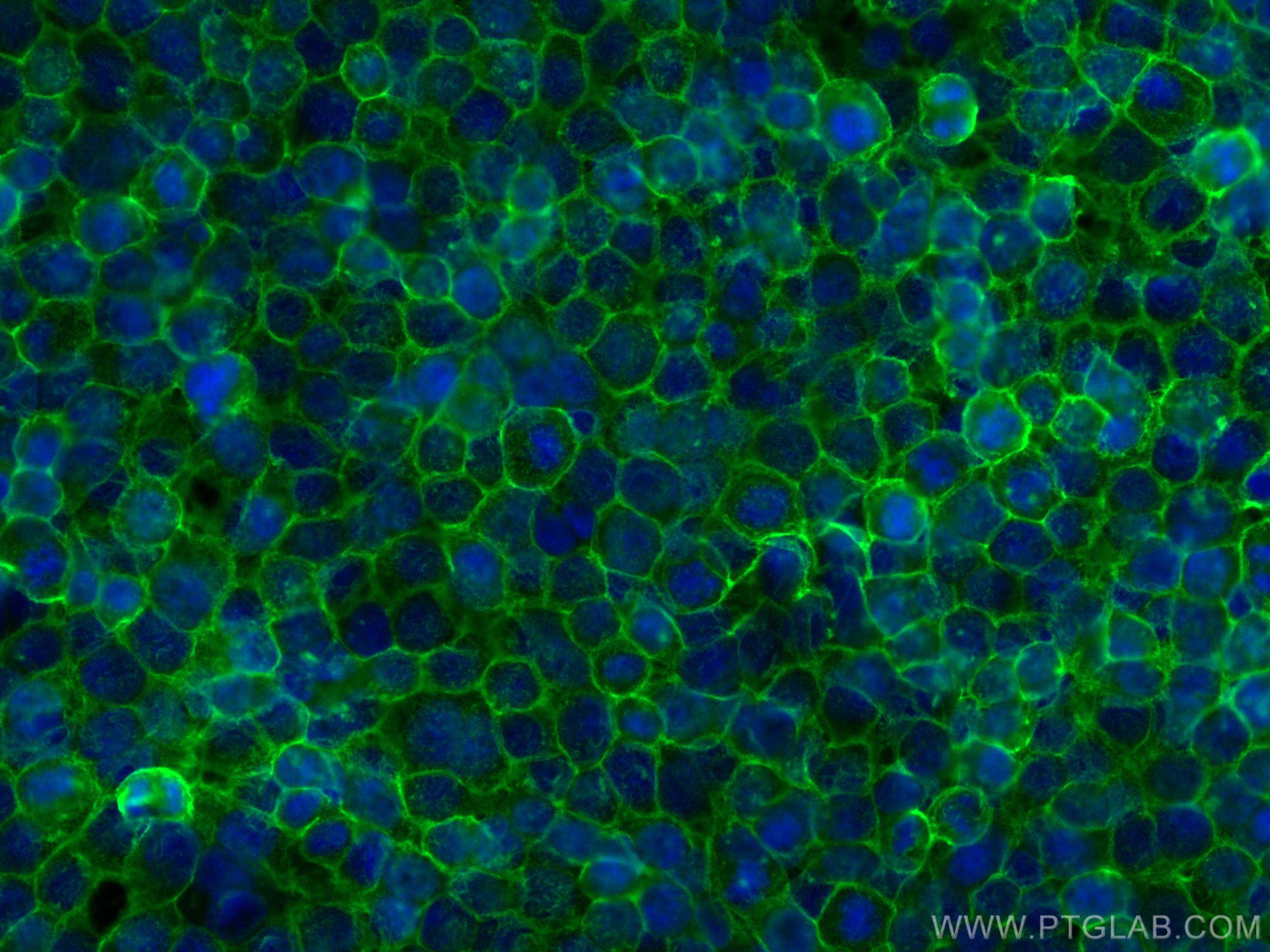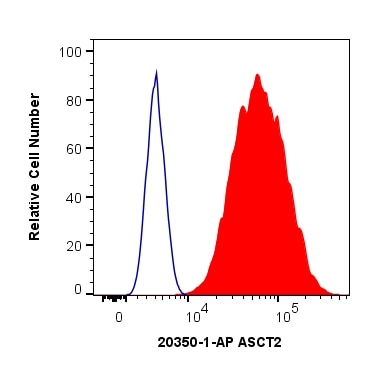- Featured Product
- KD/KO Validated
SLC1A5/ASCT2 Polyklonaler Antikörper
SLC1A5/ASCT2 Polyklonal Antikörper für WB, IHC, IF/ICC, IF-P, IF-Fro, FC (Intra), ELISA
Wirt / Isotyp
Kaninchen / IgG
Getestete Reaktivität
human, Maus und mehr (3)
Anwendung
WB, IHC, IF/ICC, IF-P, IF-Fro, FC (Intra), ELISA
Konjugation
Unkonjugiert
Kat-Nr. : 20350-1-AP
Synonyme
Geprüfte Anwendungen
| Erfolgreiche Detektion in WB | HeLa-Zellen |
| Erfolgreiche Detektion in IHC | humanes Kolonkarzinomgewebe, humanes Magenkrebsgewebe Hinweis: Antigendemaskierung mit TE-Puffer pH 9,0 empfohlen. (*) Wahlweise kann die Antigendemaskierung auch mit Citratpuffer pH 6,0 erfolgen. |
| Erfolgreiche Detektion in IF-P | Maus-Dünndarmgewebe |
| Erfolgreiche Detektion in IF-Fro | Maus-Dünndarmgewebe |
| Erfolgreiche Detektion in IF/ICC | HEK-293-Zellen |
| Erfolgreiche Detektion in FC (Intra) | HeLa-Zellen |
Empfohlene Verdünnung
| Anwendung | Verdünnung |
|---|---|
| Western Blot (WB) | WB : 1:2000-1:16000 |
| Immunhistochemie (IHC) | IHC : 1:400-1:1600 |
| Immunfluoreszenz (IF)-P | IF-P : 1:50-1:500 |
| Immunfluoreszenz (IF)-FRO | IF-FRO : 1:50-1:500 |
| Immunfluoreszenz (IF)/ICC | IF/ICC : 1:200-1:800 |
| Durchflusszytometrie (FC) (INTRA) | FC (INTRA) : 0.40 ug per 10^6 cells in a 100 µl suspension |
| It is recommended that this reagent should be titrated in each testing system to obtain optimal results. | |
| Sample-dependent, check data in validation data gallery | |
Veröffentlichte Anwendungen
| KD/KO | See 2 publications below |
| WB | See 28 publications below |
| IHC | See 12 publications below |
| IF | See 7 publications below |
Produktinformation
20350-1-AP bindet in WB, IHC, IF/ICC, IF-P, IF-Fro, FC (Intra), ELISA SLC1A5/ASCT2 und zeigt Reaktivität mit human, Maus
| Getestete Reaktivität | human, Maus |
| In Publikationen genannte Reaktivität | human, Hausschwein, Hund, Maus, Ziege |
| Wirt / Isotyp | Kaninchen / IgG |
| Klonalität | Polyklonal |
| Typ | Antikörper |
| Immunogen | SLC1A5/ASCT2 fusion protein Ag14182 |
| Vollständiger Name | solute carrier family 1 (neutral amino acid transporter), member 5 |
| Berechnetes Molekulargewicht | 541 aa, 57 kDa |
| Beobachtetes Molekulargewicht | 55-70 kDa |
| GenBank-Zugangsnummer | BC000062 |
| Gene symbol | SLC1A5/ASCT2 |
| Gene ID (NCBI) | 6510 |
| Konjugation | Unkonjugiert |
| Form | Liquid |
| Reinigungsmethode | Antigen-Affinitätsreinigung |
| Lagerungspuffer | PBS with 0.02% sodium azide and 50% glycerol |
| Lagerungsbedingungen | Bei -20°C lagern. Nach dem Versand ein Jahr lang stabil Aliquotieren ist bei -20oC Lagerung nicht notwendig. 20ul Größen enthalten 0,1% BSA. |
Hintergrundinformationen
SLC1A5 (Solute Carrier Family 1, member 5), also named as ASCT2, a major glutamine transporter belonging to the SLC1 family and localized in the plasma membrane of several body districts. Consistent with the functions exerted by glutamine, SLC1A5 is involved in uptake of essential amino acids, activation of mTORC1 and glutamine-dependent tumor cell survival and growth. SLC1A5 is highly expressed in various malignancies and plays a critical role in the transformation, growth and survival of cancer cells (PMID: 30234109). High SLC1A5 expression is associated with poor prognosis in clear-cell renal cell carcinoma (PMID: 26599282).
Protokolle
| PRODUKTSPEZIFISCHE PROTOKOLLE | |
|---|---|
| WB protocol for SLC1A5/ASCT2 antibody 20350-1-AP | Protokoll herunterladen |
| IHC protocol for SLC1A5/ASCT2 antibody 20350-1-AP | Protokoll herunterladenl |
| IF protocol for SLC1A5/ASCT2 antibody 20350-1-AP | Protokoll herunterladen |
| STANDARD-PROTOKOLLE | |
|---|---|
| Klicken Sie hier, um unsere Standardprotokolle anzuzeigen |
Publikationen
| Species | Application | Title |
|---|---|---|
ACS Nano Biomimetic Nanomedicine Targeting Orchestrated Metabolism Coupled with Regulatory Factors to Disrupt the Metabolic Plasticity of Breast Cancer | ||
Theranostics PPAR-γ integrates obesity and adipocyte clock through epigenetic regulation of Bmal1. | ||
J Transl Med Elevated SLC1A5 associated with poor prognosis and therapeutic resistance to transarterial chemoembolization in hepatocellular carcinoma | ||
J Transl Med Modulation of SRC by SNTB1 activates the Hippo-YAP pathway during colon adenocarcinoma metastasis | ||
Cell Biol Toxicol Degradation of HIF-1α induced by curcumol blocks glutaminolysis and inhibits epithelial-mesenchymal transition and invasion in colorectal cancer cells. |
